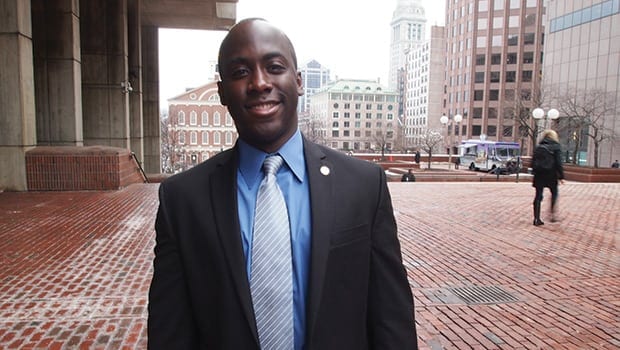
For more than a year, City Councilor Charles Yancey has urged the administration of Mayor Martin Walsh to release information on the number and pay of people of color on the city’s payroll, with limited success.
Finally, the administration will release a report, according to Shaun Blugh, who heads the Walsh administration’s newly established Office of Diversity and Inclusion. The report, to be issued within weeks, will provide more accurate data on the racial makeup of the city’s workforce than did the quarterly reports the administration of the late Tom Menino released during his 20 years in office, Blugh said.
“You have to know what’s out there, and I think this report is a good start for benchmarking where we are currently and where we can go forward, to outline next steps, and what I think my duties will be in the next year or two and what it will take to really see movement at City Hall,” Blugh told the Banner.
The report’s findings will not likely come as a surprise. The city’s most recent figures, from December 2013, show a workforce that is 60 percent white in a city that is 53 percent people of color. And in most of city government, black, Latino and Asian workers are concentrated in the lowest-paying jobs.
In the Public Works Department for example, whites are 57 percent of the workforce and occupy 15 of the 17 top-paying jobs.
Even though Walsh has assembled a diverse cabinet with half the positions filled by people of color and ethnic minorities, he hasn’t had time to make much of a dent overall in the city’s workforce of 16,000. And while the city’s Police and Fire departments have refused to report on their hiring figures, according to Yancey, their most recent classes of recruits have been overwhelmingly white.
“I am very concerned that the administration has as yet not been as transparent as the mayor said it would be,” Yancey said.
Walsh announced Blugh’s appointment last December in a press conference that coincided with the release of a report detailing a lack of Latinos in leadership positions in City Hall. Latinos hold just 7 percent of cabinet and department-head positions in city government. They are also underrepresented on Boston boards and commissions.
Standing with Blugh during the announcement were members of a newly-assembled task force charged with helping to recruit diverse talent into city government. That task force has not yet convened, though Blugh says he has met with some individual members.
“So far a lot of what we’ve been doing is going out into the community, meeting with professional organizations, meeting with diversity and inclusion leaders across the region, to get a feel of the landscape,” Blugh said. “I’ve been doing a lot more listening to see where we can go.”
While not much has changed since the December 2014 report, released by the Latino Network of Greater Boston, Blugh points to the fact that 2,200 city employees will be eligible for retirement within the next five years.
“It’s a great opportunity to think about how we can address, through meeting with department heads and seeing where the talent is, whether we recruit internally or externally, to bring in more diverse talent for these positions,” Blugh said.
Born in Trinidad and raised in Brooklyn, Blugh comes to the city after working as a diversity officer in the corporate sector, where he says corporate executives increasingly view recruiting a diverse workforce as a necessity.
“The main key is to have people understand that diversity initiatives aren’t just a good thing to do,” he said. “I think it’s a business imperative for how city governments and how private sector looks at their mission statements. In cities like Boston that have changing demographics, it makes more sense to have more cultural understanding of what’s happening in your city.”
As for the quarterly reports Yancey would like to see the city release, Blugh was noncommittal.
“It’s something we’re looking into,” he said.







